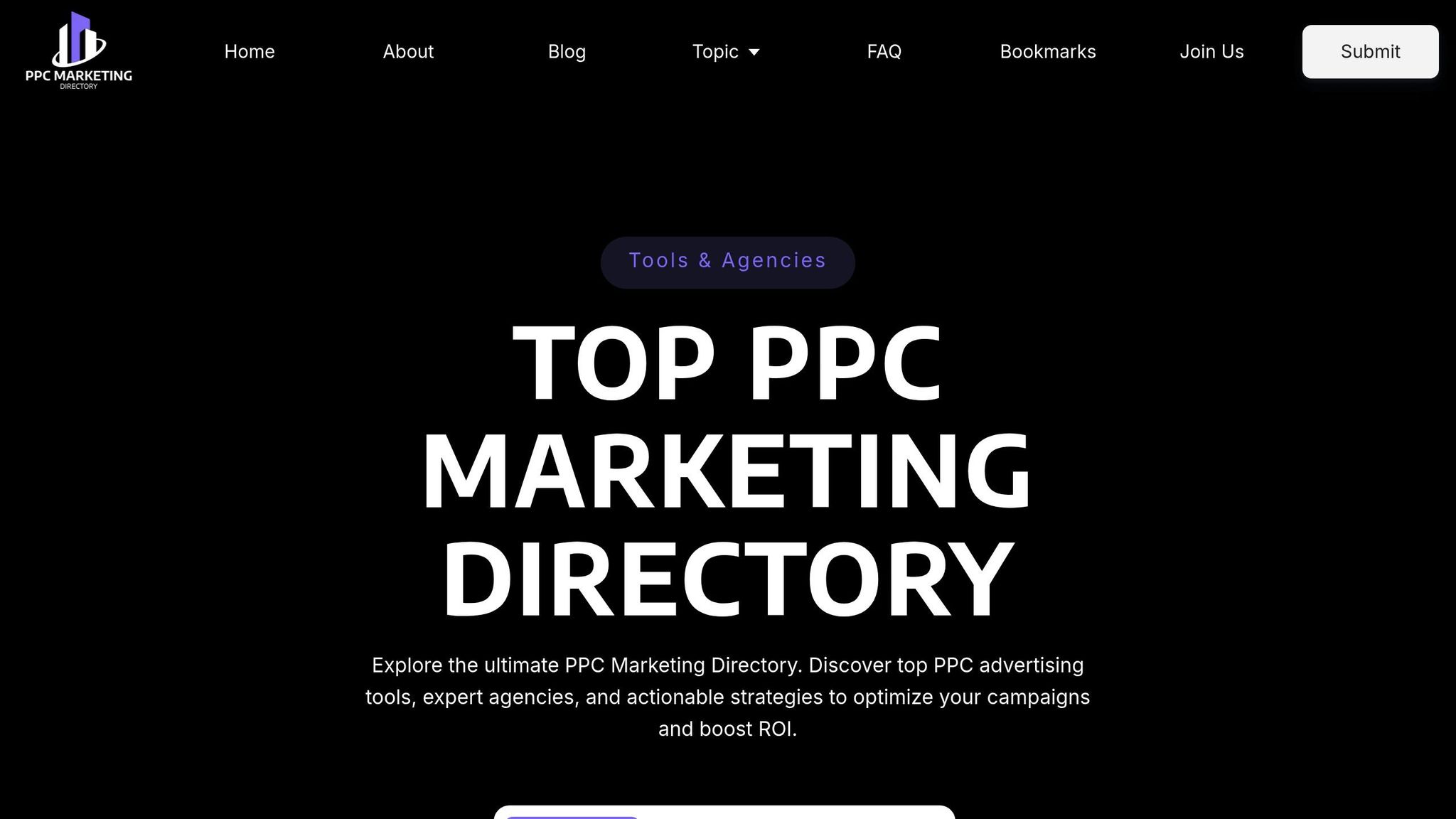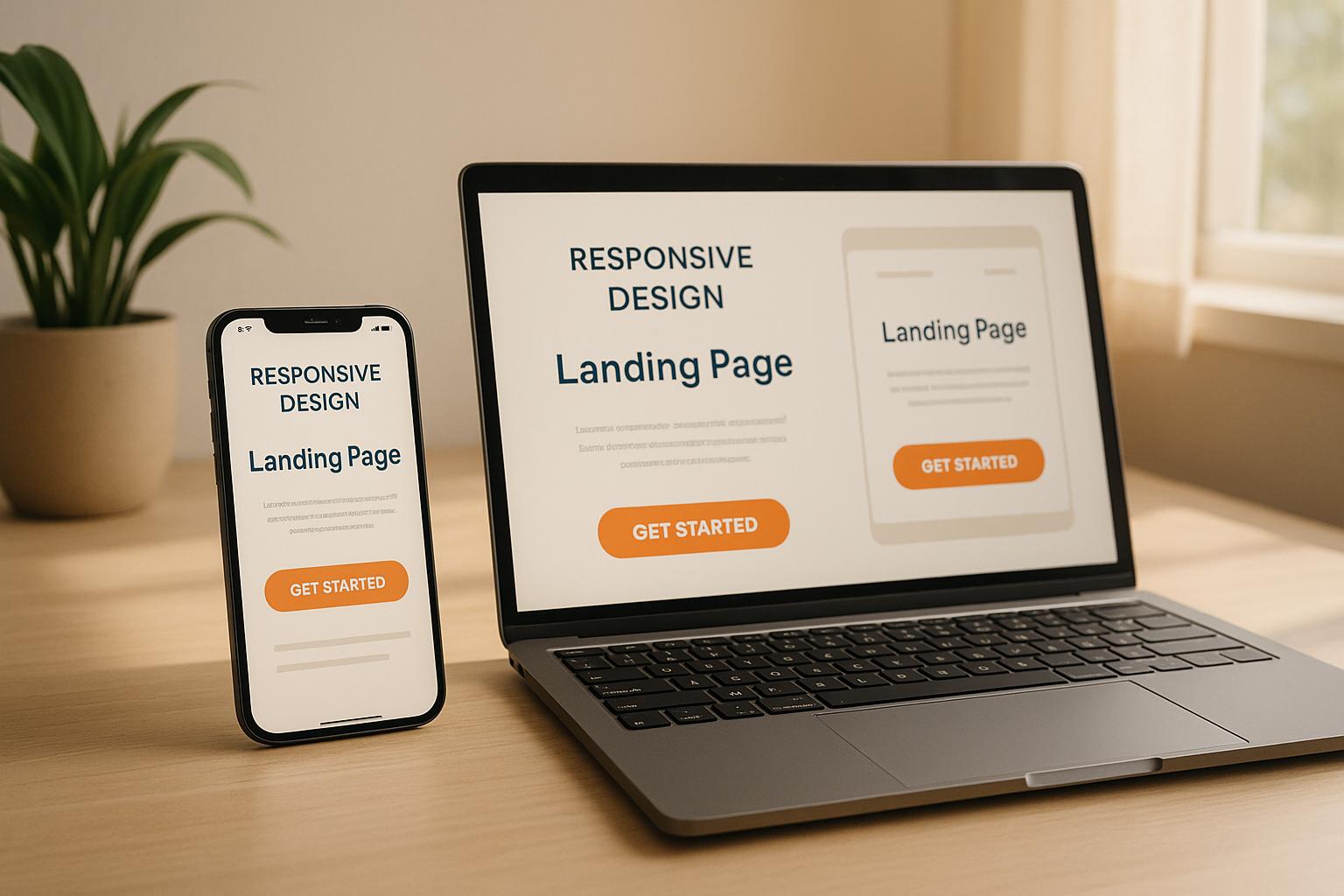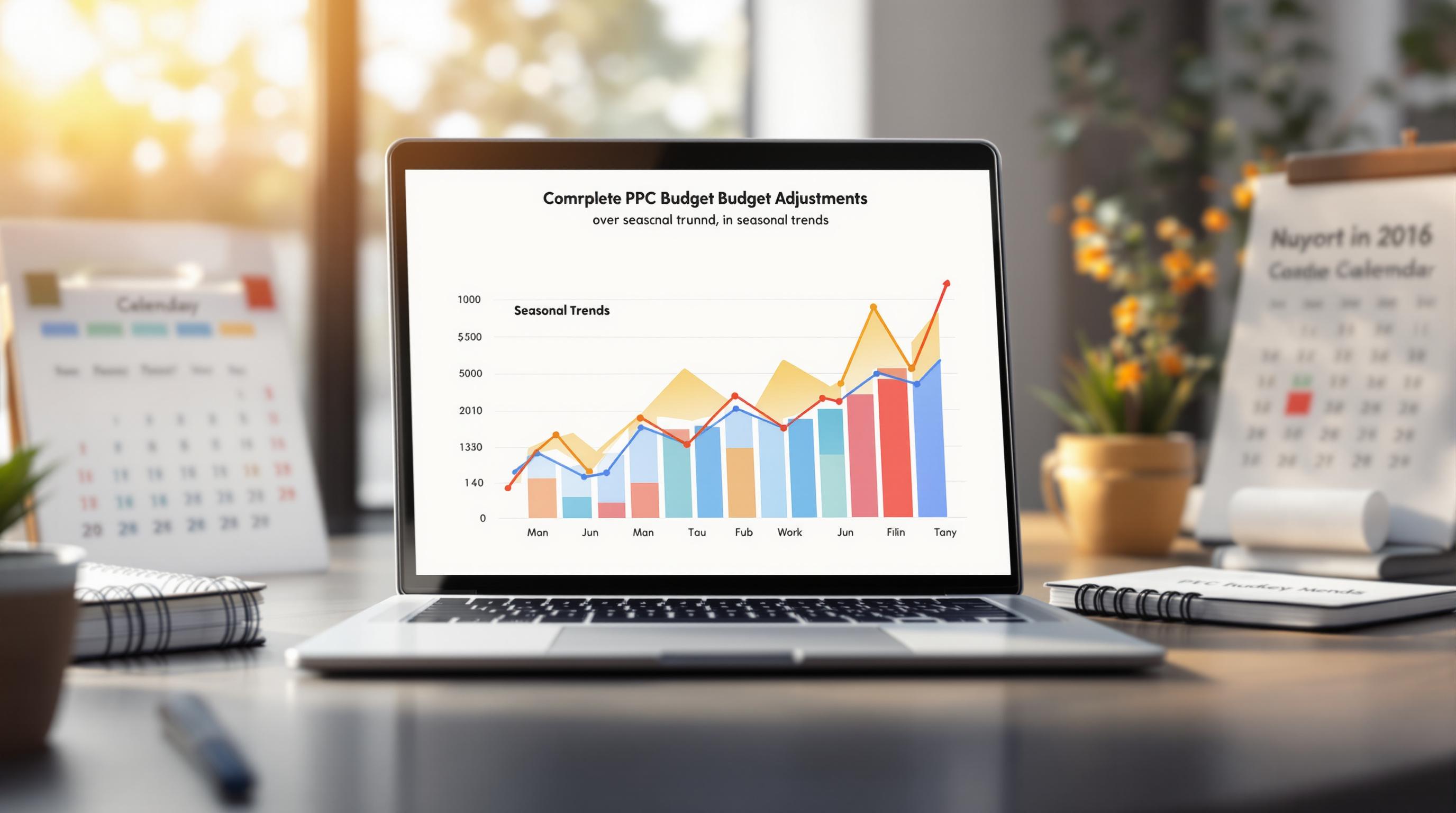Crafting ad copy for multiple platforms is challenging due to varying audience preferences, character limits, and platform-specific guidelines. Natural Language Processing (NLP) simplifies this by analyzing context, tone, and sentiment to create tailored, effective campaigns. Here's how NLP helps:
- Automates ad creation for specific audiences.
- Analyzes trends to optimize messaging.
- Adjusts tone and sentiment for each platform.
- Improves relevance by aligning with platform expectations.
Key challenges marketers face include adapting to platform constraints, maintaining brand consistency, and scaling campaigns efficiently. NLP addresses these by automating analysis, localizing messages, and providing real-time performance tracking.
Top methods include:
- Keyword optimization: Focuses on user intent and conversational phrases.
- Sentiment analysis: Creates emotion-driven, audience-specific messaging.
- Grammar and tone tools: Ensures clarity and platform-specific readability.
Tools like Copy.ai, Jasper AI, and Writesonic streamline ad creation, while integration with platforms like Google Ads boosts efficiency. To succeed, focus on high-quality data, A/B testing, and responsible AI practices to ensure unbiased and compliant campaigns.
NLP is transforming advertising by making campaigns more personalized and effective, helping brands like Coca-Cola and Airbnb achieve higher engagement and conversions. With the NLP market projected to grow significantly, adopting these practices ensures better results across platforms.
💣 Google Ads Copy Hack Using Google Natural Language Tool and ChatGPT
Key NLP Methods for Ad Copy Optimization
Now that we’ve covered how NLP reshapes cross-platform advertising, let’s dive into the specific techniques that make it so impactful. These approaches work together to craft ad copy that not only meets platform guidelines but also resonates deeply with your audience.
Keyword and Phrase Optimization
Traditional keyword strategies often focus on high-volume search terms. NLP, however, takes it a step further by analyzing context and user intent. This approach uncovers keywords that align more closely with what people are genuinely searching for, leading to ad copy that feels more relevant and personal.
For example, NLP doesn’t just stop at generic terms like "running shoes." It identifies specific phrases like "best running shoes for flat feet" or "comfortable sneakers for daily jogging." This ability to pinpoint conversational, long-tail keywords is especially valuable as voice search continues to grow. Additionally, semantic keyword inclusion helps search engines grasp the broader topic of your ad copy, improving its visibility and relevance.
There’s proof this works. eBay, in partnership with Phrasee, saw a 15.8% boost in engagement, while Chase Bank experienced a staggering 450% increase in click-through rates using NLP-generated ads from Persado. To replicate these results, focus on crafting ad copy that directly answers common questions. Use structured data to provide context for search engines, and organize campaigns around topic clusters instead of isolated keywords.
Next, let’s look at how sentiment analysis reshapes messaging to better connect with your audience.
Sentiment Analysis for Better Messaging
Sentiment analysis leverages NLP to understand customer emotions and opinions, helping marketers create ad copy that speaks directly to their audience. By analyzing feedback from social media, reviews, surveys, and customer service interactions, it classifies sentiments as positive, neutral, or negative - offering a deeper understanding of what your audience values.
This insight matters. Studies show that 95% of buyers check online reviews before making a purchase, and 58% are willing to spend more on products recommended by trusted businesses. It’s no wonder that 80% of companies have adopted sentiment analysis by 2023 to stay competitive.
The results are impressive. For instance, the Atlanta Hawks used Sprout Social to analyze fan sentiment, boosting video views by 127.1% and growing their audience by 170.1% in just three months. Similarly, James Hardie refined its product development and sales strategies by analyzing online conversations with social listening tools.
Real-time sentiment analysis is a game-changer. It allows brands to monitor their reputation and respond quickly to both praise and criticism. To get started, gather data from diverse sources like social media, reviews, and surveys. Use sentiment analysis tools to score and categorize this data, then integrate these insights into your digital marketing platforms. Regularly train your models to improve their understanding of context, especially for multilingual audiences.
Grammar, Readability, and Tone Improvements
Even the best keyword strategy or sentiment insights can fall flat if your ad copy is hard to read or riddled with mistakes. That’s where NLP tools excel - they analyze text patterns to enhance clarity, structure, and tone.
Tools like Grammarly and Wordtune go beyond basic spell-checks. They evaluate tone, readability, originality, and even keyword placement, while offering rephrasing suggestions . These tools can also be customized to match your audience’s preferences, whether that’s a specific grade level, level of formality, or tone.
AI readability optimization simplifies language, shortens sentences, and polishes grammar to make your message clear and engaging. This is especially important for cross-platform campaigns, where audiences may have varying levels of sophistication. For example, in February 2025, Gravitate Design used AI readability strategies to claim the #1 spot in Google’s AI Overviews within a day of publishing their guide. They achieved this by formatting content for both AI summaries and human readers.
To improve your ad copy’s readability:
- Break long sentences into shorter ones (under 17 words).
- Keep paragraphs concise (2-3 sentences).
- Use active voice.
- Avoid jargon.
- Replace vague pronouns with specific nouns.
- Use headings, lists, and bold text to guide both readers and search engines.
While AI tools provide quick fixes, don’t skip the human touch. Manual review ensures your content’s tone and intent stay genuine. Combining AI-driven insights with human oversight keeps your ad copy sharp and effective across any platform.
"Listen to your customers, not competitors"
This advice hits home when it comes to NLP-driven ad copy. Let your audience’s preferences guide your decisions, rather than relying on generic best practices.
AI and NLP Tools for Cross-Platform Campaigns
Natural Language Processing (NLP) is a game-changer for creating ad copy, especially when managing campaigns across multiple platforms. With 73% of U.S. marketers already using AI for content creation and the AI marketing industry projected to hit $107.5 billion by 2028, picking the right tool can make or break your strategy. These tools not only automate text generation but also analyze data, personalize messaging, and integrate seamlessly with your marketing systems.
Let’s explore some of the top AI tools that showcase these capabilities.
Top NLP Tools for Ad Copy
There’s no shortage of AI-powered ad copy tools, each bringing something unique to the table. Here are some standout options:
- Copy.ai: Perfect for beginners, this tool is rated 4.8/5 on G2. It offers a free plan with limited features, while paid plans range from $36 to $186 per month . Its ability to churn out multiple ad variations quickly makes it ideal for A/B testing across platforms.
- Jasper AI: Known for its content generation and workflow management, Jasper AI is rated 4.7/5 on G2. Starting at $39 per month, it excels in maintaining brand consistency across campaigns .
- Rytr: A budget-friendly option with plans starting at just $7.50 per month, Rytr is a great choice for marketers looking to create short-form content without breaking the bank.
- AdCreative.ai: Specializing in ad creation, this tool offers plans beginning at $29 per month. It’s an all-in-one solution, generating both ad copy and visuals for cross-platform campaigns.
- Writesonic: Taking a model-agnostic approach, Writesonic selects from multiple AI models to deliver faster and higher-quality results. Rated 4.8/5 on G2, it offers packages ranging from a free plan to $79 per month, with enterprise solutions starting at $9,999 annually .
When evaluating these tools, focus on factors like precision, customization, efficiency, and scalability. Providing clear data about your target audience and aligning the tool with your brand’s voice can further enhance results.
The right tool doesn’t just improve your ad copy; it also integrates smoothly with your campaign management systems, ensuring everything works in harmony.
Integration with Ad Platforms and Campaign Management Systems
Modern AI tools integrate effortlessly with platforms like Google Ads and Facebook Ads Manager, enabling real-time adjustments based on campaign performance. This can lead to conversion rate boosts of around 20%. For instance, a major retailer saw a 25% increase in conversions in just one month by optimizing Facebook ads with AI-driven adaptive targeting and bid management.
Integration typically involves connecting tools via APIs, allowing for automated ad creation, performance tracking, and dynamic content adjustments. Personalized ads, which are six times more likely to get clicks compared to generic ones, benefit significantly from this kind of automation.
A great example of integration success is AdScale. Marketing Manager Idan Vaknin from Speedo shared:
"AdScale has streamlined our marketing with instant reporting and automated ad creation across all product lines. This quarter alone, they have delivered a 1312% ROAS, clearly delivering on their promises."
Similarly, Keren Ben Shlush from Jansport noted:
"Integration was straightforward and delivered significant results. With AdScale, our sales have increased by more than 200% over last year while reducing our advertising budget by 60%."
When selecting tools, prioritize those that integrate seamlessly with your existing marketing stack and can adjust ad copy dynamically based on real-time user engagement and performance metrics.
Finding Tools and Agencies with Top PPC Marketing Directory

With so many options, finding the right NLP tools can feel overwhelming. That’s where the Top PPC Marketing Directory comes in. It’s a curated resource designed to help U.S. businesses discover the best solutions for ad copy optimization.
The directory specializes in PPC advertising tools, focusing on categories like campaign management, bid management, A/B testing, and, of course, NLP-driven ad copy creation. This focus ensures you’ll find tools tailored to your advertising needs rather than generic content creators.
The platform offers various listing tiers, from free basic options to premium placements with enhanced visibility. This structure makes it easy to identify established players while also spotting emerging tools that may suit your specific needs.
For businesses considering outsourcing, the directory also features agencies with expertise in NLP-powered ad strategies. These agencies often have partnerships with multiple tools and can recommend the best fit for your industry and budget. Their combination of technical know-how and marketing strategy can be invaluable.
Whether you’re exploring tools or seeking expert agencies, the Top PPC Marketing Directory simplifies your search by focusing exclusively on PPC-related solutions, helping you make informed decisions for your campaigns.
sbb-itb-89b8f36
Best Practices for Using NLP in Ad Copy
To get the best results from Natural Language Processing (NLP) in advertising, it’s crucial to focus on high-quality data, rigorous testing, and maintaining fairness and compliance. Let’s dive into the steps that can transform your campaigns from average to exceptional.
Using High-Quality Input Data
NLP tools are only as good as the data they’re trained on. That means your data needs to be accurate, relevant, and complete. To ensure this, start by profiling your data to identify any gaps or inconsistencies. Standardizing your data - by aligning it with external standards and internal business needs - creates consistency and reliability.
Data enrichment is another key step. This involves adding valuable details to your existing data, such as combining customer demographics with purchase history or translating content into multiple languages. Regular verification is also essential. This could mean manually cross-checking your centralized database against original sources or using anomaly detection tools to flag unexpected changes in metrics.
To keep everything running smoothly, establish a data governance framework. This should outline policies, roles, and responsibilities for managing data quality. Key elements include data access, classification, enrichment, and reconciliation. A solid governance structure ensures your team knows their part in maintaining the integrity of your data.
The bottom line? High-quality data is the foundation for reliable testing and unbiased results.
A/B Testing and Continuous Improvement
Once your data is in good shape, testing becomes your next focus. A/B testing helps you turn insights into actionable results. For example, when JPMorgan Chase used AI-generated ad copy from Persado, they saw a 450% increase in click-through rates. Similarly, eBay leveraged Phrasee’s AI for email marketing, resulting in higher open rates and revenue. Another success story is BOOM by Cindy Joseph, which achieved a 57% boost in engagement with AI-driven content powered by IBM Watson.
To get started, define clear goals and key performance indicators (KPIs). Are you aiming to improve click-through rates, conversions, or something else? Your objectives will shape your entire testing process.
High-quality data is critical here, too. AI depends on large, reliable datasets to make accurate predictions. Poor data will only lead to poor results, so this step ties back to your data preparation efforts.
While AI can automate much of the process, human oversight remains essential. Humans play a crucial role in interpreting results and ensuring that AI recommendations align with your business objectives.
For faster optimization, consider using Multi-Armed Bandit (MAB) testing. Unlike A/B testing, which splits traffic evenly, MAB testing dynamically reallocates traffic to high-performing variations in real time. This approach minimizes losses from underperforming ads while still allowing for experimentation.
| Factor | A/B Testing | AI-Powered Multi-Armed Bandit Testing |
|---|---|---|
| Traffic Allocation | Fixed, even split between variations | Dynamically shifts traffic to high-performing variations |
| Time Required | Requires running the test for a set duration | Adjusts in real time, reaching conclusions faster |
| Risk of Losing Conversions | High, as losing variations continue receiving traffic | Lower, since underperforming variations receive less traffic |
| Best for | Controlled experiments where conclusive results are needed | Rapid optimization and ongoing learning |
Combining AI-powered testing with personalization strategies can take your campaigns even further. This ensures not only strong overall performance but also deeper connections with specific audience segments.
Avoiding Bias and Ensuring Compliance
As you optimize ad copy, fairness and compliance should remain top priorities. AI bias isn’t just a theoretical issue - it’s a real threat to your reputation and bottom line. Bias can creep in through flawed data, algorithms, or objectives, leading to unfair outcomes.
The risks are clear. Only 35% of global consumers trust how businesses use AI, while companies with responsible AI practices experience 30% fewer failures and double the profits from their AI efforts. Past mistakes highlight the stakes: Amazon had to shut down an AI recruiting tool that discriminated against women, and Apple Card’s AI system offered lower credit limits to women compared to men with similar financial profiles. Even Google Photos faced backlash for mislabeling Black individuals due to insufficient diversity in its training data.
To address these issues, build datasets that reflect a wide range of demographics and regularly update them to match evolving social patterns. Use fairness-aware algorithms and multiple metrics to refine your outputs continuously. Tools like IBM’s AI Fairness 360 and Google’s What-If Tool can help you audit your models and identify potential biases.
Transparency is equally important. Explainable AI (XAI) makes AI decisions easier to understand, allowing teams to catch biased logic early and take corrective action.
Finally, foster a culture of responsible AI development. Train your team on ethical principles, encourage collaboration between data scientists and business leaders, and establish clear guidelines for every stage of AI model development. Governance structures, such as AI ethics boards, can oversee these efforts and ensure transparency in how consumer data is used. These steps not only help you comply with regulations but also build trust with your audience - an invaluable asset in today’s market.
Measuring Success and Scaling Campaigns with NLP
To make the most of NLP in advertising, it's essential to measure its impact, identify what works, and scale those successes effectively. Let’s dig into the key metrics that matter and how they translate into scalable campaigns.
Key Metrics for Ad Copy Performance
Measuring the effectiveness of NLP in ad campaigns goes beyond the usual metrics like click-through rates and conversions. While those are still important, you also need to evaluate how well your NLP models are performing their core tasks.
For this, rely on technical metrics like accuracy, precision, recall, F1 score, and ROC-AUC. These help assess the model's reliability. Additionally, content quality metrics such as BLEU and ROUGE scores are crucial for evaluating the quality of generated text. For practical purposes, models with an F1 score above 0.8 are generally considered dependable. Interestingly, training models on domain-specific data can boost their performance by up to 25% compared to using general datasets.
To get the clearest picture, focus on metrics that align with your campaign goals. Tools like confusion matrices and cross-validation techniques can further refine your evaluation.
| Score Range | Performance Interpretation |
|---|---|
| 0.0 - 0.5 | Poor discrimination |
| 0.5 - 0.7 | Acceptable to Fair |
| 0.7 - 0.8 | Good |
| 0.8 - 0.9 | Very Good |
| 0.9 - 1.0 | Excellent |
Tracking Campaign Success from NLP
Connecting NLP improvements to campaign outcomes requires a structured approach that ties technical achievements to business results. By analyzing how NLP-driven insights impact engagement and conversions, you can make data-backed creative adjustments.
Case studies show that NLP can significantly enhance engagement rates and conversions. For example, you can use NLP to identify patterns in tone, style, and structure across your top-performing ads. Start by collecting a dataset of these ads and comparing it with industry benchmarks. NLP tools can uncover subtle trends that might escape a human reviewer, offering fresh ideas for ad concepts. Sentiment analysis is another powerful tool, providing real-time feedback from customer reviews, social media, and other sources. This allows you to tweak your messaging on the fly.
To ensure long-term success, establish feedback loops between your NLP insights and campaign performance. Once you identify what works, use those insights to create variations of your ad copy and test their effectiveness through A/B testing.
Scaling Successful Ad Copy Across Platforms
Once you’ve identified what works, the next step is scaling those successes across platforms. NLP-powered automation makes this process faster and more efficient without sacrificing quality or relevance.
AI tools can manage large-scale campaigns by targeting the right audience segments and making real-time adjustments to optimize performance. For instance, Nike's personalized video ads led to a 40% boost in user engagement and a 25% increase in online sales. Similarly, Spotify’s dynamic audio ads saw a 30% jump in engagement rates.
These tools also ensure your brand voice stays consistent while tailoring messages to each platform and audience. By personalizing content based on preferences, behaviors, and demographics, NLP tools streamline the scaling process. For example, L'Oréal’s AI-powered beauty advisor increased conversion rates by 20% by delivering tailored product recommendations via email, social media, and web channels. Salesforce also saw notable results, including a 25% rise in deal closures and a 30% reduction in sales cycles, by using AI to personalize their marketing efforts.
"AI is a game-changer for ABM. It allows us to analyze vast amounts of data and predict account behavior with high accuracy, enabling us to target our efforts more effectively", said an expert from Userled.
Data backs this up: 71% of ABM marketers use marketing automation to tailor content to specific accounts, and 61% report better engagement and conversion rates with personalized approaches. Companies leveraging AI-driven campaigns have seen engagement climb by 35% and sales increase by 22%.
To scale effectively, use sentiment analysis to measure how your ad copy resonates emotionally with audiences. Generate multiple ad variations with NLP tools and run A/B tests to find the messaging that works best for different audience segments. This iterative process ensures your campaigns remain impactful as they grow.
Conclusion
Natural Language Processing (NLP) is reshaping how marketers craft ad copy for multiple platforms. The results speak for themselves: eBay saw a 15.8% increase in engagement using Phrasee's AI-generated language, while a fashion retailer experienced a 50% boost in sales through Albert's precision targeting.
With NLP, marketers can create personalized campaigns tailored to each platform's unique audience and format. This approach moves beyond generic, one-size-fits-all messaging, replacing it with data-driven, audience-specific content. As discussed earlier, this shift is what sets high-performing campaigns apart from the rest.
The momentum behind NLP adoption is hard to ignore. Projections estimate the NLP market will soar to $156.80 billion by 2030. Businesses that hesitate to embrace this technology risk losing ground to competitors already leveraging automated optimization and sentiment analysis to fine-tune their strategies.
To stay ahead, marketers need the right tools and expertise. Resources like the Top PPC Marketing Directory provide a curated list of agencies and platforms specializing in NLP-powered ad optimization. These experts understand the intricacies of cross-platform campaigns, from keyword research and A/B testing to performance tracking - all critical for effective NLP implementation.
Whether your goal is to automate repetitive tasks, maintain brand consistency across platforms, or gain deeper audience insights through sentiment analysis, NLP offers a clear path to improved campaign performance. The question now is: how quickly can you adopt NLP to remain competitive in an advertising world that's becoming increasingly automated? The strategies outlined in this guide provide a solid foundation for making that leap.
FAQs
How do NLP tools like sentiment analysis and keyword optimization improve ad performance across platforms?
NLP tools like sentiment analysis give marketers a window into customer emotions as they happen. This insight allows for the creation of ad messages that genuinely connect with their audience, driving stronger engagement and better performance across various platforms.
Meanwhile, keyword optimization focuses on identifying trending terms and the language customers use. By incorporating these keywords into ad campaigns, marketers ensure their messaging aligns with audience interests, making ads more relevant and precisely targeted.
When combined, these strategies elevate ad performance by delivering tailored, platform-specific content. The result? Higher conversion rates and better ROI for campaigns spanning multiple platforms.
What are the best ways to ensure data quality and minimize bias when using NLP for ad campaigns?
To ensure data quality in NLP-driven advertising, start by building datasets that are both diverse and representative. Regularly review your data for errors or inconsistencies, and invest time in thorough data profiling and cleaning. This ensures your models remain accurate and dependable.
When it comes to reducing bias, work with balanced and inclusive datasets. During model training, apply debiasing techniques to minimize skewed outcomes. Additionally, involve teams with varied perspectives to review your data and model outputs. These efforts help create fairer and more effective NLP models for your ad campaigns.
How do AI and NLP tools work with platforms like Google Ads to boost ad performance and scalability?
AI and NLP tools bring a new level of precision to platforms like Google Ads by analyzing and fine-tuning ad copy, targeting, and bidding strategies. Through natural language processing, these tools evaluate elements like tone, sentiment, and clarity in ad content, ensuring the messaging connects more effectively with the intended audience.
By leveraging AI-powered automation, campaigns can adjust in real time, delivering ads that are more relevant and engaging across various platforms. This allows businesses to broaden their reach, boost ROI, and scale campaigns with greater efficiency.


